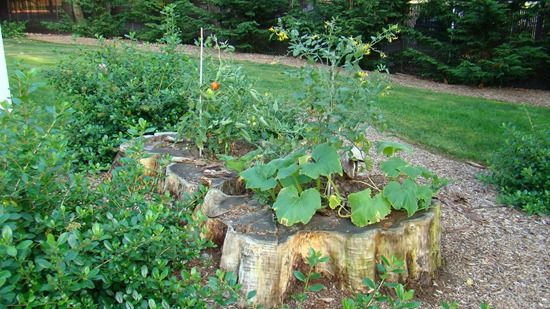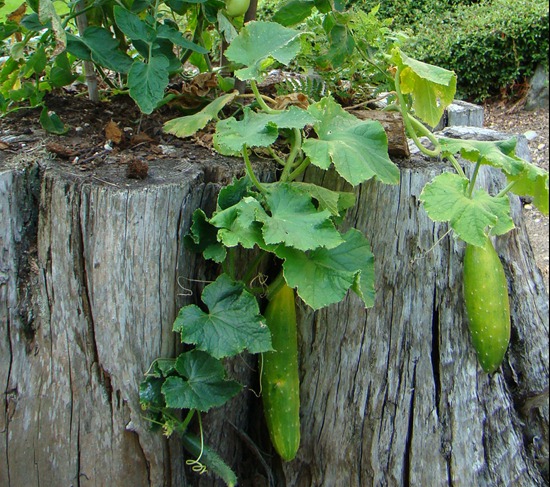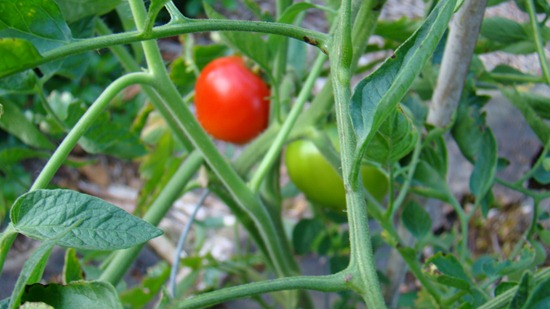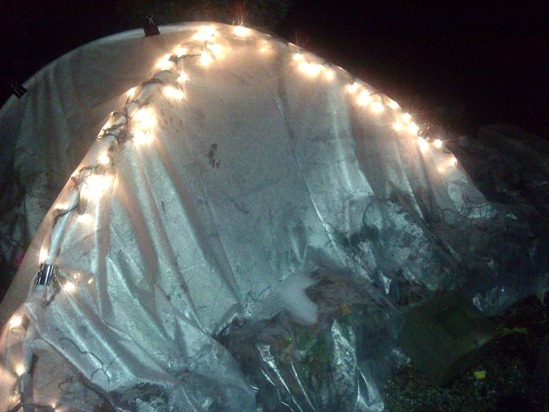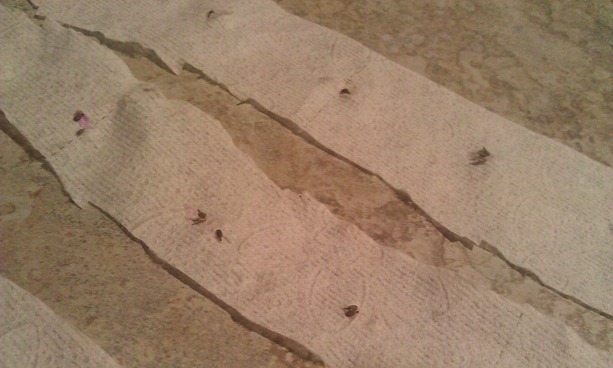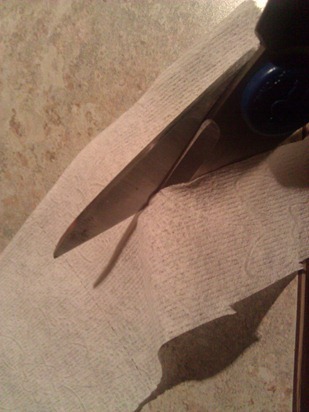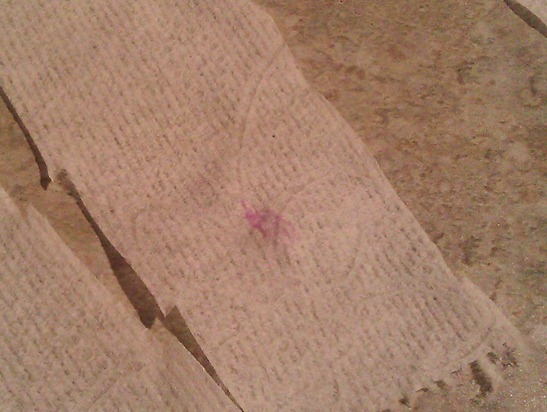Gardening Novice
11 years ago guest post, outdoor seed starting

My ancestors were German farmers, but somewhere along the way the green thumb gene got spliced out of me. Despite enjoying an abundance of homegrown green peppers, squash, and tomatoes in my youth, I never seriously shadowed my grandparents nor my mother in the garden.
My youthful experience gardening involved one sad attempt at growing carrots from seedlings, an endeavor so fraught with impatience I harvested little orange worms (they do not deserve to be called carrots) no bigger than a pinky toe. I hung up the trowel and spade after that attempt, and determined that all of my future vegetables would be store bought and enjoy endless refrigeration in a yard-free condominium.
However, each summer as the sun grows warm I miss the fresh taste of garden tomatoes. I also, inexplicably, long to get dirt beneath my nails. I have recently become very aware of sourcing food locally, and it seems to me there is no better local source than my own backyard.
There have been many stumbling blocks to garden domination.
1. Soil. It turns out that soil is very important to the success of your garden. Too dense (like the clay-like mud of our yard) and plants don’t have room to grow or absorb nutrients. Too loose (loamy) and the beds won’t retain sufficient amounts of water leaving your plants thirsty. Talk to your local nursery about the local soil. My guy was very helpful in setting me up with some soil to supplement and loosen up our existing dirt. If you are looking for a cheaper, more green alternative to purchasing soil from a nursery composting is a good option. We got a late start on it this year and therefore went the lazy route, but I am eager to use compost in our garden next year.
2. Space. While I did not end up in the full-service penthouse condominium of my dreams, our yard still presents special challenges. We’ve opted to use square foot gardening techniques to organize our garden. Some plants will take up a single square foot of space, and other plants like the zucchini take up four or more spaces on the grid. Since most of our seedlings started out the same size, using this square foot method helped ensure we buffered each plant with enough room to grow.
Additionally we are experimenting with other space savers like vertical gardening and upside down planters. So far we have had mixed success due in part to poor planning (Who knew the garage cast that large of a shadow in the afternoon while we are work?), but ultimately we look to have an interesting and robust crop coming.
3. Cost. Free vegetables aren’t free. We thunked down a healthy amount of start-up cash to get our garden going. Lumber for raised beds, soil, and even the seeds and plants themselves set us back a little more than we anticipated. However we built the garden for longevity and hope to reduce our costs next year. Additionally. we have taken the garden beyond just the edibles and taken tips from www.texaselectricityproviders.com to improve our landscaping to reduce home energy costs. Ultimately, knowing exactly where our food is coming from carries more value than the few extra dollars invested this year.
I am excited to see if I have reclaimed my heritage come harvest. I hold out hope that if I squint at in the right light (and rub some freshly cut grass on it) my thumb will reflect a healthy green hue.
How to construct a raised vegetable garden
11.2 years ago guest post, outdoor seed starting, planter, vegetable bad
If you have a messy child who loves to plant and play around the garden, but who you are fed up of cleaning up after a day of joyful dirty exploration, a raised garden bed may be the ideal solution you are so deeply looking for. This type of bed is easy enough to build, takes around 2 hours to build from start to finish, and will set you back by around $200 – $300.

Recommended materials
Although you could use pretty much any type of wood you wish to make the bed, it is recommended that you use some form of rot-resistant wood, which isn’t coated in anything which may be harmful if eaten; after all, you are about to plant vegetables in it, and we all know how much children love to put anything and everything into their mouths. Next, you need to select your plot of ground. Ideally it will be somewhere with plenty light, and a maximum of 4ft wide, so that the children can reach into the middle without climbing or falling into it, however it can be as long as your elected choice of timber allows. For the best drainage, you should remove the grass on your elected plot, and tile it under the soil. The following set of instructions will allow you to make a bed 4ft wide by 10ft long, but you can change the values to suit your needs.
The frame
Firstly, you should cut an 8ft length of your elected timber in half, to create your 2 4ft ends. Hold one of your 10ft lengths on its end, and line up one of your 4ft cuts so that the face of your 10ft length covers the cut end of your 4ft length. Using a drill or screwdriver, attach the two pieces together through the back of the 10ft board, and into the cut end of the 4ft length. It is advisable to use 3 x 3” screws, but you can essentially use as many as you wish to ensure it is sturdy. Do the same thing for all sides, so you should now have the outline of your bed in a basic rectangle shape. Once all the sides are attached, use a framing square to ensure all the corners sit at a 90 degree angle, and adjust where necessary.
Corner support
Now that you have your bed in a perfect rectangle, you want to keep it that way. So attach a piece of wood to each corner, which should give you a triangle shape at each of your corners. Again, attach these pieces with as many screws as you feel necessary.

Select your spot
Now you can move your frame to your elected sunny spot, and mark out where it will lie by drawing a line around the outside of your frame with a shovel or spade.

Preparing the ground
Now you know where your bed is going to sit, take the frame out of the way again, and remove the grass layer where your bed is going to sit. After you have removed the grass, try to turn the soil a bit so that you will have good drainage.
Making sure all is level
Lift your frame back into its final sunny resting place, and remove soil from around the edges of the frame so that all sides are level with one another.
Secure your frame
The next step involved settling your frame into place, to ensure it doesn’t move. You should cut 10 2ft lengths of wood, and create a spike at one end by cutting diagonally from around 5” up the long side, into the middle of the short side on both sides. Once you have make all of your stakes, hammer them at least 18” into the ground, and 2.5ft intervals along the outside of the long edges of your frame. Once they are in the ground, secure your stakes by drilling through them and the frame of the bed so that they are 100% in place. Then put a stake into each corner, and secure the same way. Finally, you need to put one stake into the middle of each short edge, but only secure with screws on one side.

Adding your soil
You can now remove the unscrewed edge of your bed, and use your wheelbarrow to empty a combination of soil and compost to fill the bed until the soil sits around 2-3” from the top edge of the frame.
Complete your frame
You can now put the short edge of your frame back into place, and secure with screws like you did with all of the other sides. As a finishing touch to your masterpiece, you can use a saw to cut the top of all of the stakes so that they sit level with the rest of the frame.

Let the fun begin!
Now that your bed is completed, you can begin to plant your vegetables and plants. Just remember to keep them well watered, and you’ll be eating home-grown vegetable soup in no time at all!
Author Bio: Peter Smith loves gardening at his free time. He also gives online gardening tips to people, click here to go to his site. Apart he is an experienced freelance writer.
Growing vegetables gardens in stumps
11.7 years ago guerilla gardening, outdoor seed starting, vegetables
Many people may have heard of guerilla gardening where eager gardeners will make use of an abandoned lot and start a little vegetable garden on the down low. Here is another take on a similar idea but a little more out in the open.
My brother-in-law lives in a condominium that unfortunately does not provide much space for an outdoor garden with the exception of several potted plants on a patio. Looking for a what to expand his garden and get some sun loving plants in the ground he found a great location in some rotting stumps in a common area.
First he dug out some of the rotten wood with enough space of the desired plant to grow. Next he filled the area with some good quality soil, plant, and water and let nature do the rest of the work.
So far the results look great with some cucumbers ready for picking…
And some nice ripe tomatoes on the vine.
Now one of the disadvantages of growing outside of your own land is you may end up with some fruit missing from people passing by but definitely a great way to bring a little more life to your neighborhood.
Cheap hoop house heating
12.3 years ago cold season crops, outdoor seed starting, winter garden
Before you put those Christmas lights away into storage you may want to keep a couple strings (non-LED) set aside to use for heating a hoop house. These little lights can help boost the temperature 5-10 degrees inside your enclosure, while this will not allow you to grow tomatoes and peppers during the wintertime. This may be enough to allow you to keep a winter garden for the whole winter and/or provide just enough warmth to bring out your spring seedlings a couple weeks earlier.
Making your own toilet paper planting strips
12.8 years ago outdoor seed starting, seed planting sheets, seed planting strips
My previous attempt at making planting strips worked ok, lapsed a bit on the watering, but had a few surviving carrots. This time around I decided to go with the classic technique at making planting strips with simple toilet paper.
1. Start with single ply. If you buy the fancy double-triple ply toilet paper you will want to pull them apart to start with a single layer. This will make it even easier for your seeds to push their roots through the paper.
2. Cut to appropriate widths. You should be able to get four lengths of planting strip (eight lengths for double ply) by cutting the paper lengthwise 4 times. In my case I only needed 3 so I simply cut mine into thirds.
3. Apply some glue using a glue stick. Hold one end of the paper and use a little dap of glue for the appropriate spacing for my carrots I did just a little under 2 inches (just eye balling no measuring required.
4. Attach the seeds. Simple drop a few seeds in the area and press gently with your finger to ensure they are in place. I then pick up the paper and lightly shake off any seeds that did not stick and reapply seeds as needed.
5. Plant the strips. There is no reason to wait for these to dry, you can plant them immediately or wait a few days/weeks until you are ready. Lay in the desired location, cover will a bit of soil and give a light watering. In a few weeks you should have perfectly straight and spaced rows the seeds of your choice.
Growing carrot patterns with DIY seed planting sheets
12.9 years ago carrot, outdoor seed starting, seed planting sheets
My daughter likes to plant seeds but when working with smaller seeds it can be difficult to plant these seeds especially the farther the location is from edge of the garden bed. I have been thinking about solving this problem with a seed strip which can be made using burlap, newspaper, toilet paper, or any sort of paper for that matter. Next you simply stick the seeds to the paper at the appropriate spacing, let them dry and roll out as far as you want to plant. This allows you to get your seeds ready in the comfort of your favorite chair to prepare your seeds and not hunched over your garden with an aching back.
I a simple seed planting strip would have done well for what I was planning but I decided to go with the creation of my own carrot seed planting strip template that allows you to grow in the pattern of the vegetable you are growing. Completely not necessary I know but it kept my daughter occupied working on the “craft” indoors this morning.
Step 1: Get you materials. Start by downloading and printing a carrot seed planting strip template. In the picture below I printed out two copies and glued them together for a few extra carrots. Next you need some glue, a great option is to mix a little flour and water together to the consistency of toothpaste, but I wanted to keep the mess to a minimum and used good ole school glue stick.

Step 2: Glue on the seeds. Take a small dab of your glue and put a drop on each circle on the template. Drop a 1-2 seeds on each glued circle and allow to dry. Once dry I give the paper a quick shake to find any seeds that did not stick and reapply if needed.
Step 3: Plant your seeds. Make a flat surface with your trowel moving a small layer of soil from your garden bed. Lay down your paper carefully on the soil.
Finally over your paper with a small layer of soil that you removed previously.
Step 4: Water Thoroughly. You need to hydrate the seed to begin germinating but you also want to start breaking down the paper and glue to not inhibit those young roots from penetrating the paper.
This was a fun project to do with my daughter, but also considering this is a good way to get some prep work done ahead of time to make the take of planting (here in WA is many times in the rain) a much quicker task. This can be great for crops you grow multiple times per season. You can get your seeds out once, make your seed planting sheets with the appropriate planting dates and bring them out to the garden as needed.
